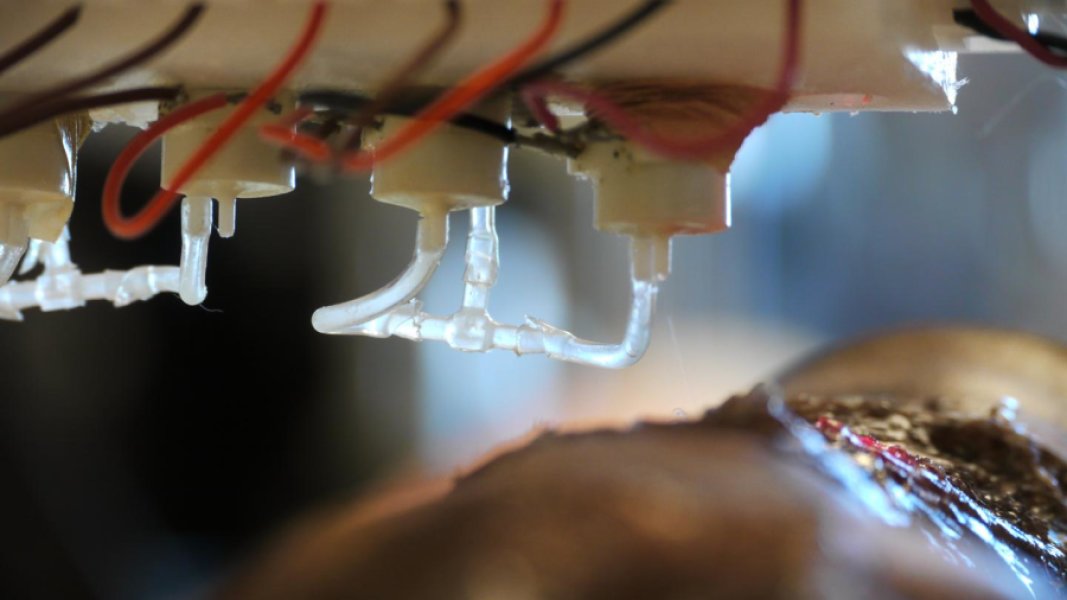The idea of a 3D bioprinter filled with a patient’s own cells, that can print skin layer by layer sounds like science-fiction and yet, engineers bring us closer and closer to this reality.
Engineers from Wake Forest Institute for Regenerative Medicine (WFIRM) developed a mobile skin bioprinting system might enable bi-layered skin to be printed directly into a wound. This technological breakthrough would be a solution for millions of people that are affected by chronic, large or non-healing wounds such as diabetic pressure ulcers which are considered very costly due to the variety of treatments they require.
Researchers demonstrate proof of concept of the mobile skin 3D bioprinter
“The unique aspect of this technology is the mobility of the system and the ability to provide on-site management of extensive wounds by scanning and measuring them in order to deposit the cells directly where they are needed to create skin,” said Sean Murphy, Ph.D., a WFIRM assistant professor who was lead author of the paper.
The major skin cells — dermal fibroblasts and epidermal keratinocytes — are easily isolated from a small biopsy of uninjured tissue and expanded. Fibroblasts are cells that synthesize the extracellular matrix and collagen that play a critical role in wound healing while keratinocytes are the predominant cells found in the epidermis, the outermost layer of the skin.
The cells are mixed into a hydrogel and placed into the bioprinter. Integrated imaging technology involving a device that scans the wound, feeds the data into the software to tell the print heads which cells to deliver exactly where in the wound layer by layer. Doing so replicates and accelerates the formation of normal skin structure and function.
The next stage consists now in conducting a clinical trial in humans. Researchers expect good results because during the research, they could already perceive new skin forming outward from the center of the wound. This is only possible thanks to the use of the patient’s own cells. However, until now, we had only seen the use of 3D Bioprinting and crocodile cartilage to repair joint injuries.
For further information about 3D Printing, follow us on our social networks and subscribe to our newsletter!
Would you like to be featured in the next issue of our digital magazine? Send us an email at contact@3dadept.com
//pagead2.googlesyndication.com/pagead/js/adsbygoogle.js (adsbygoogle = window.adsbygoogle || []).push({});





